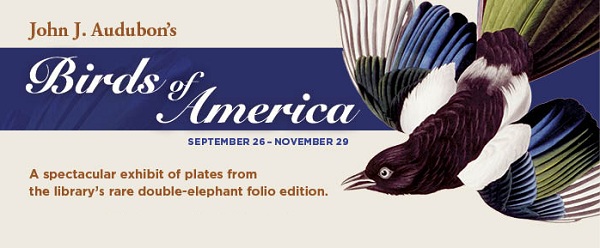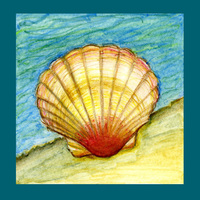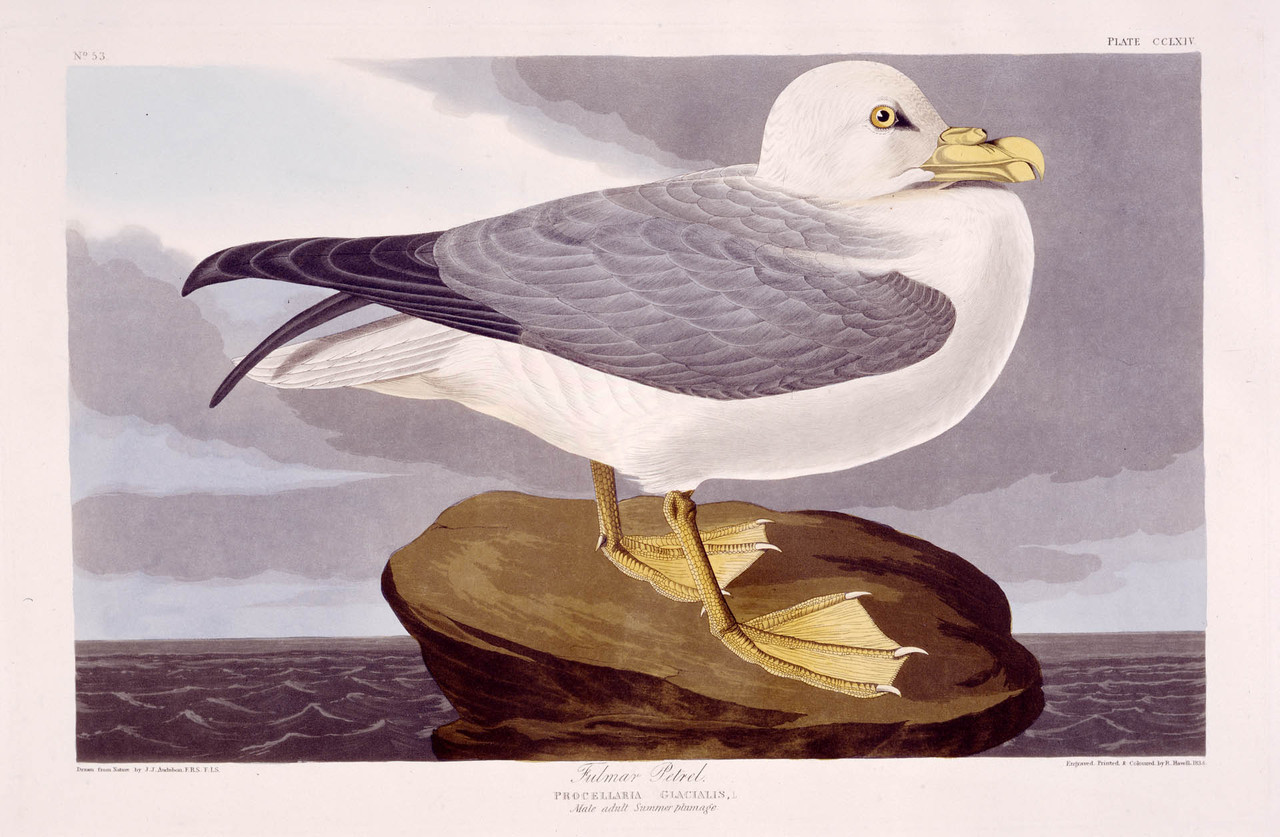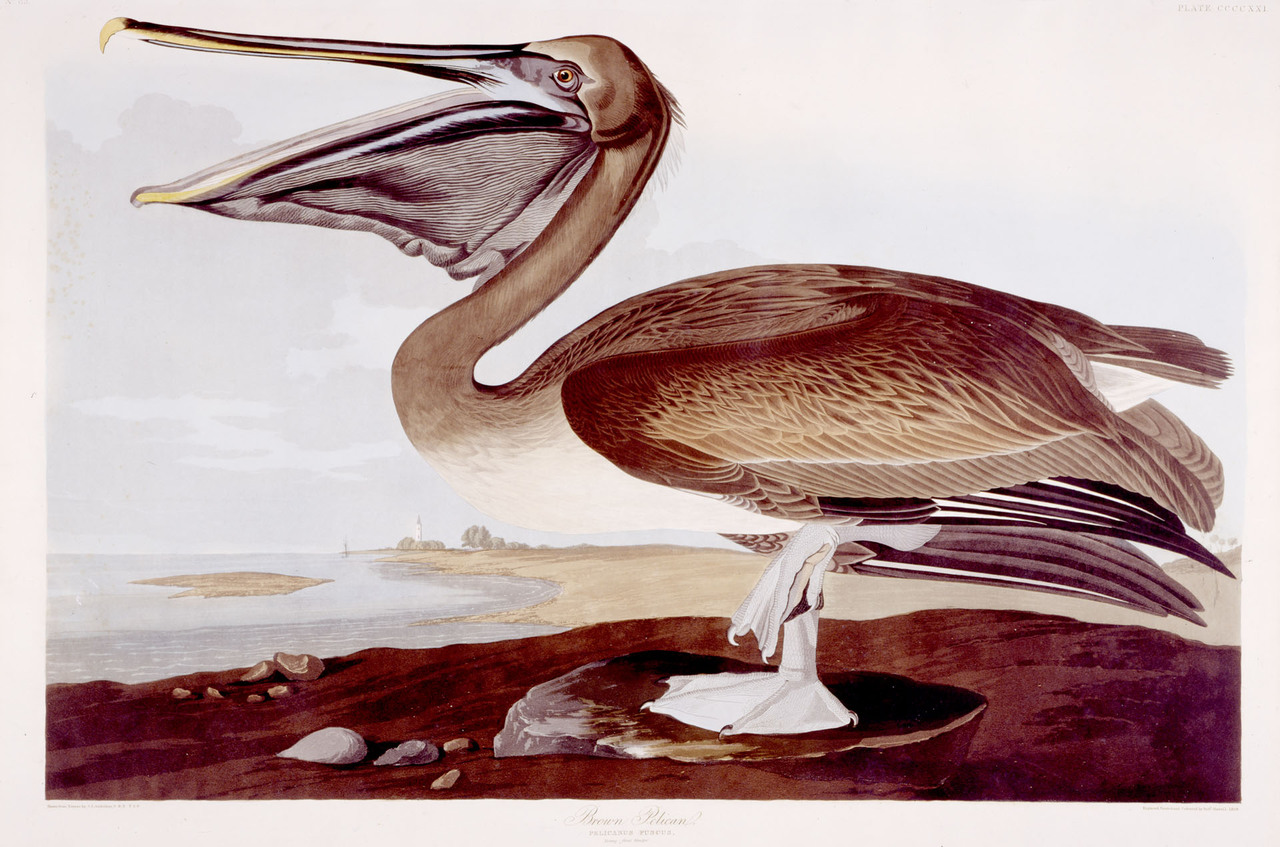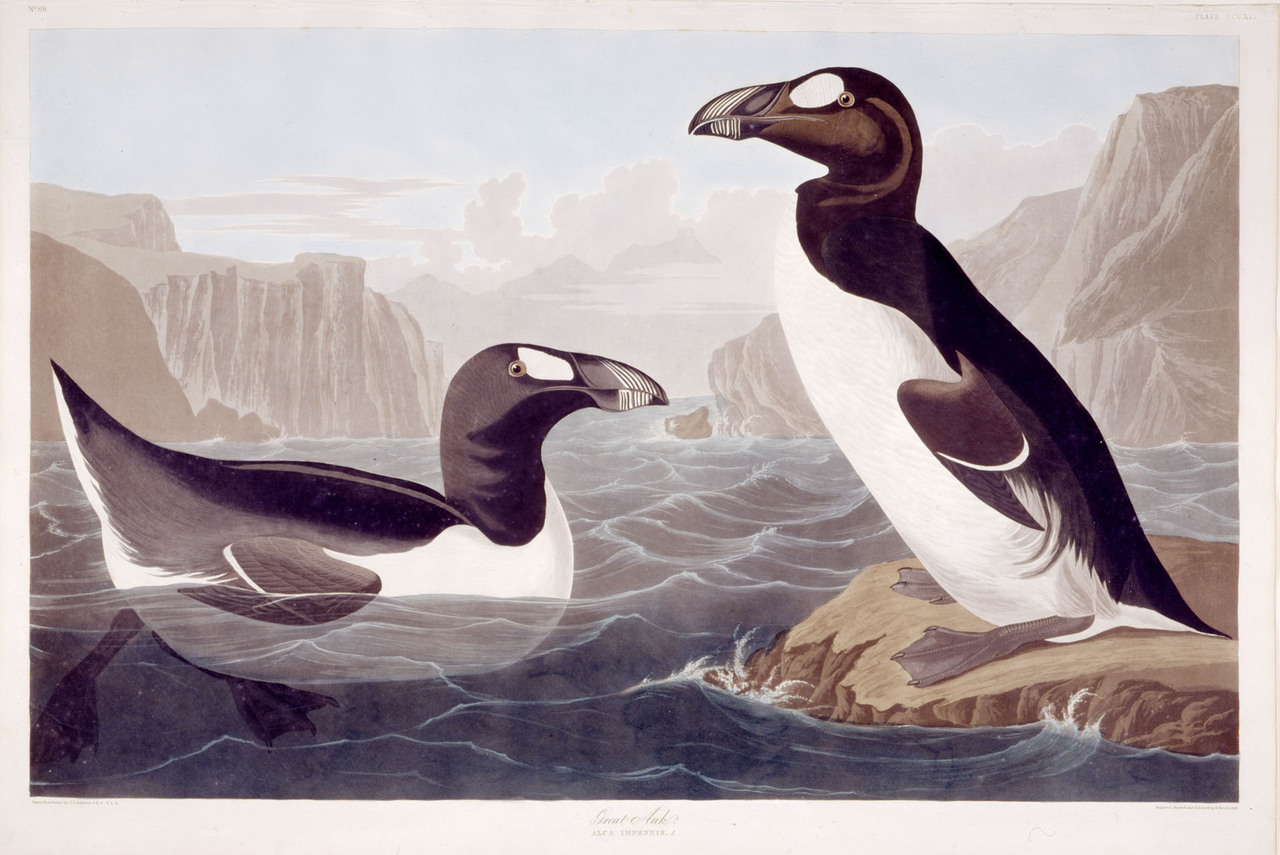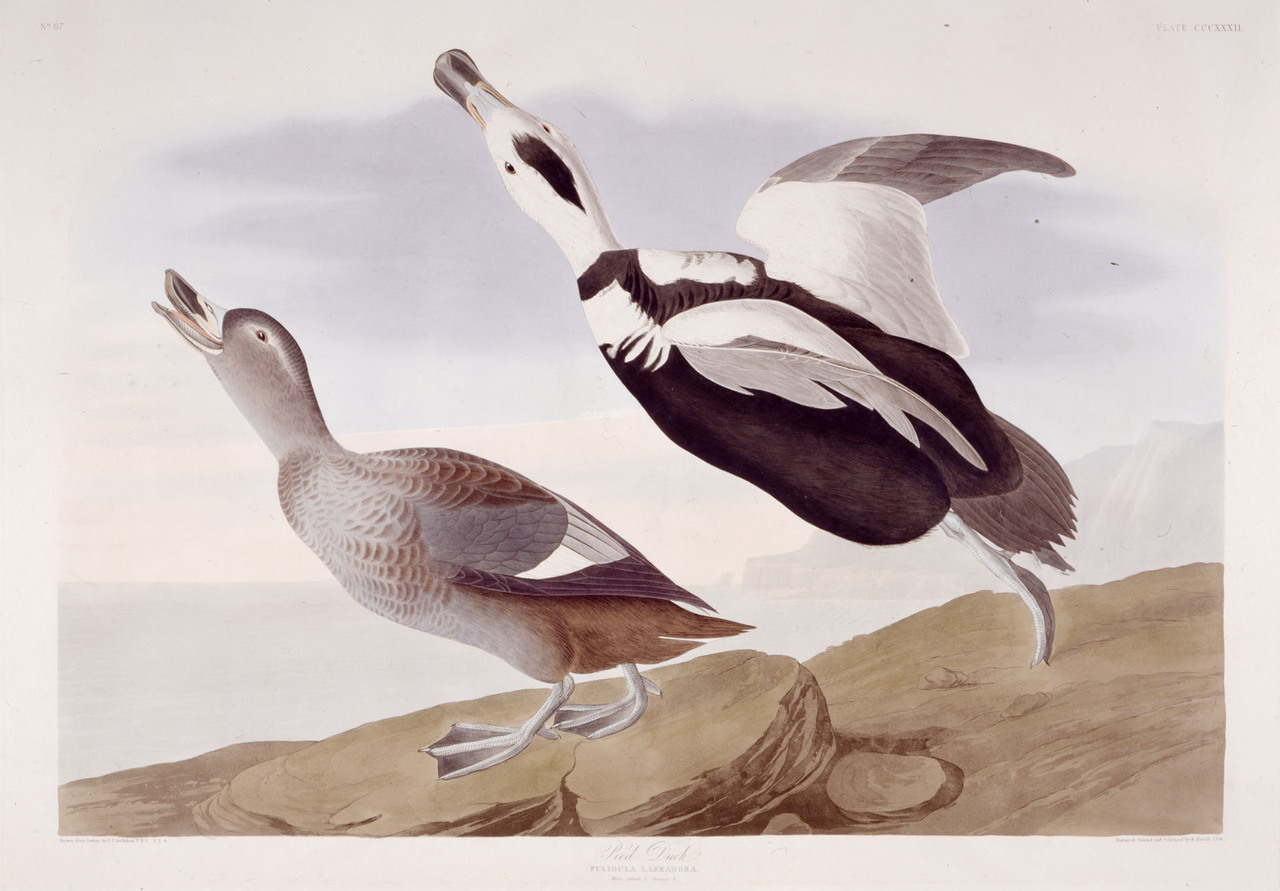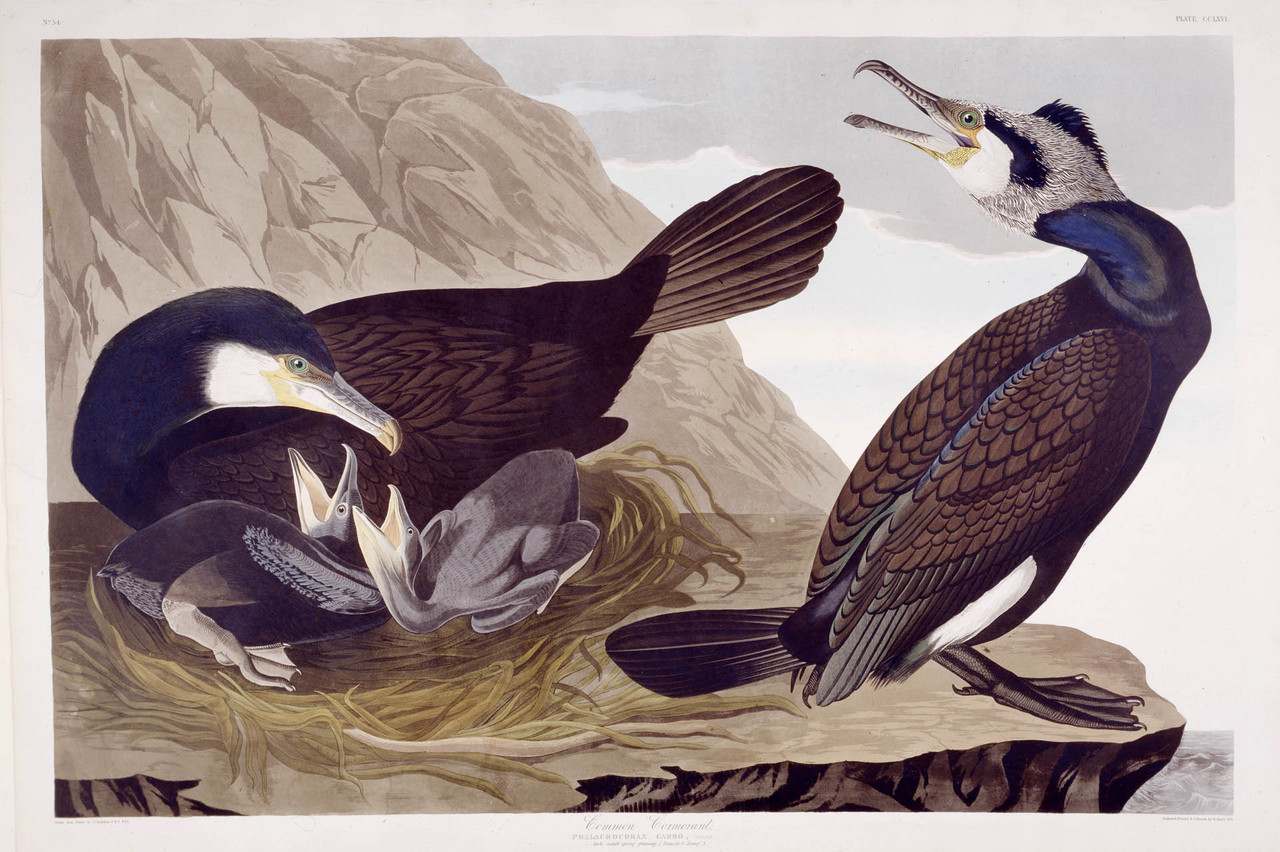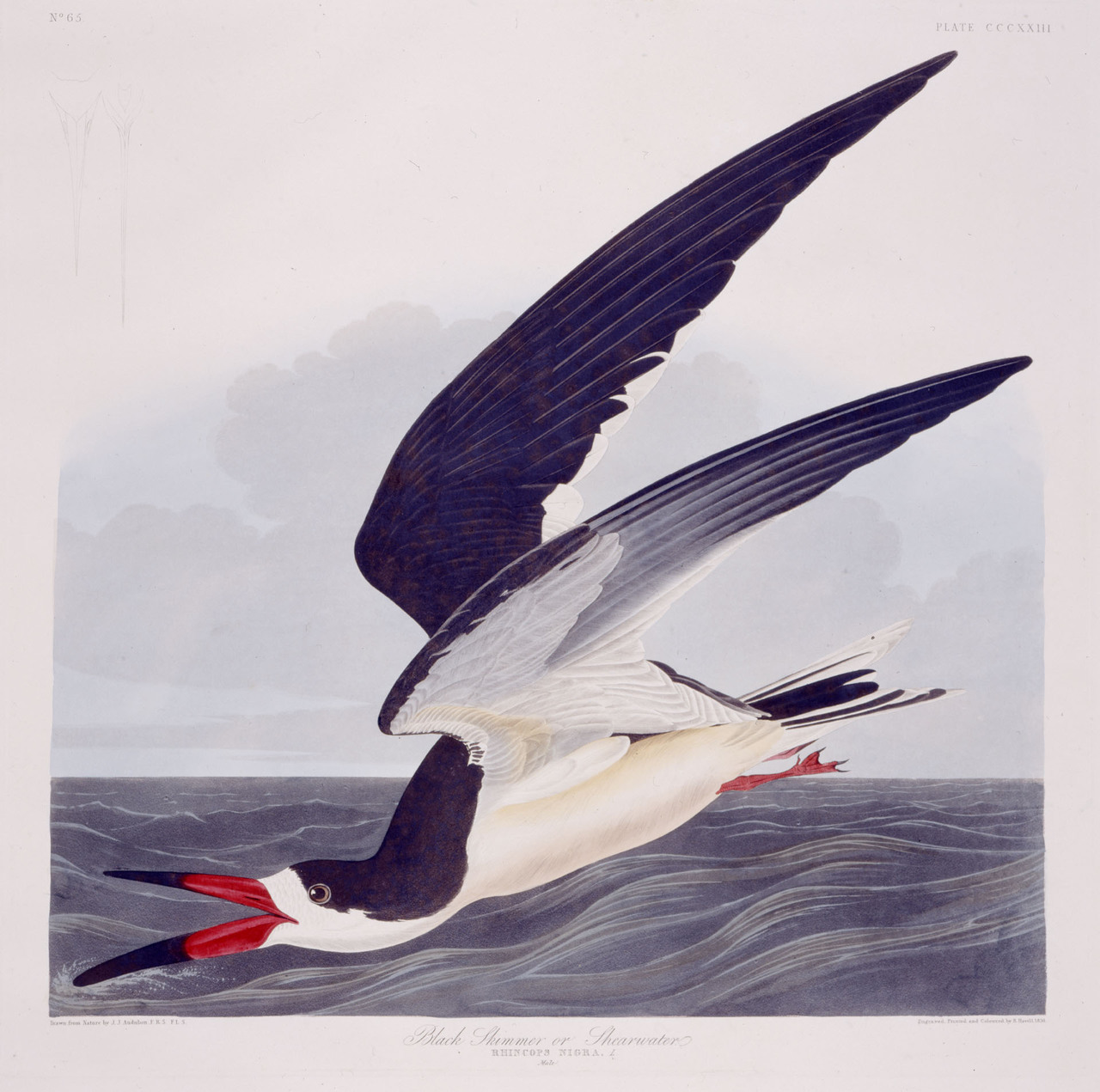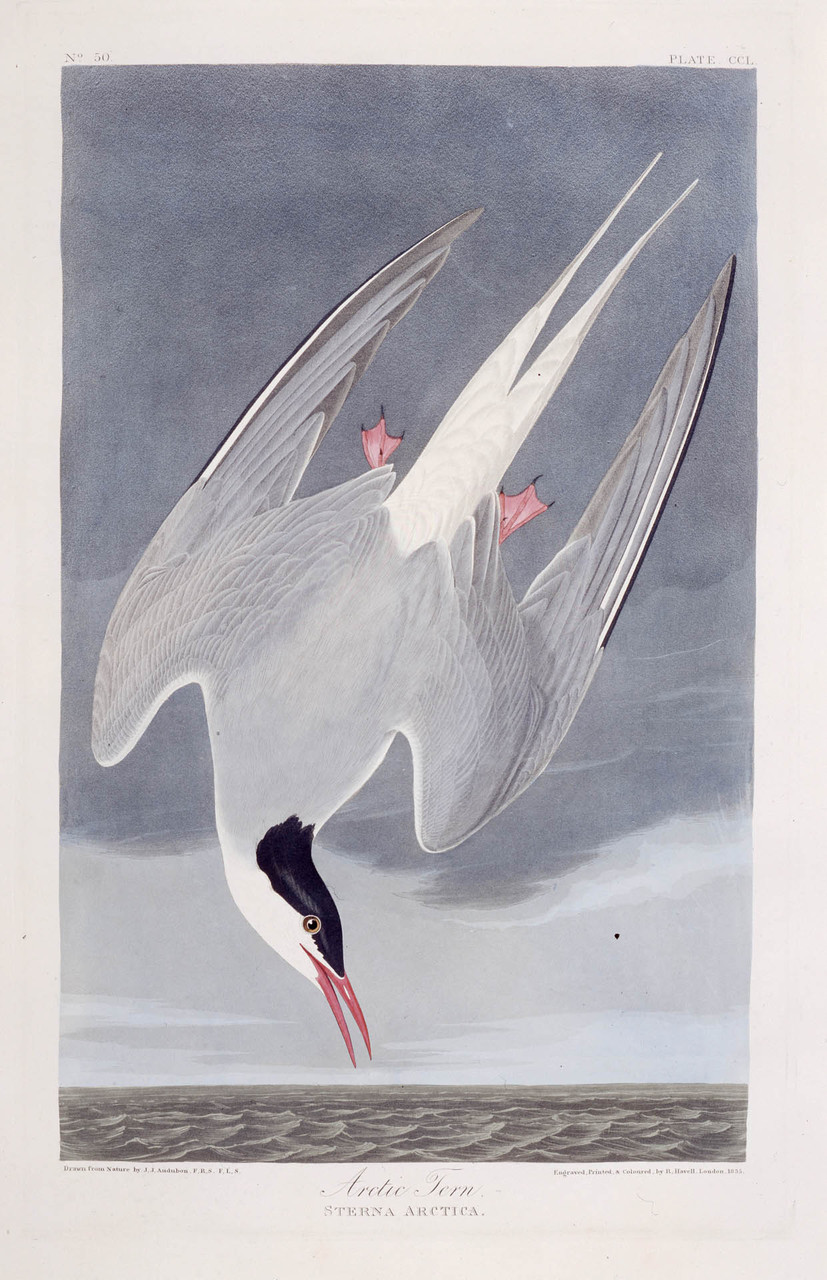Birds of the oceans and shorelines
Birds that call the ocean home spend the majority of their life at sea. Many only come to land to mate, lay eggs and raise their young. Life on the vast open ocean poses its challenges such as lack of shelter, violent storms and the absence of fresh water to drink.
Seashore birds take advantage of abundant food sources in shallow waters, bays and on the beaches. Living on the coastline, these birds are vulnerable to hunters, fishermen and egg poachers.
The Great Auk and the Pied Duck (Labrador Duck) which once inhabited Eastern Canada had disappeared by the end of Audubon’s lifetime.
The Northern Fulmar is unique in its ability to spend all of its time on the ocean.
It has no need for fresh water: a special structure on the bird’s beak allows it to filter and process the salt in its diet.
“How dexterously do they wield that great bill of theirs, as they train their plumage!”
—John James Audubon describing the Brown Pelican in his Ornithological Biography.
The world’s smallest species of pelican was on the brink of extinction in the mid-1900s.
Pesticides had caused the bird’s eggshells to become unusually thin — this meant that the fragile eggs could be crushed by their parents during incubation. Pesticide regulations have helped to restore the species.
The Great Auk was prized for its meat and feathers. It was overhunted to extinction by the end of Audubon’s lifetime.
Audubon never saw a live Great Auk, though he heard accounts of the bird from fishermen during his expedition into Labrador in 1833.
He drew this pair in London using stuffed specimens as models.
Once inhabiting the shores of the Atlantic, the Labrador Duck was the first bird to become extinct in North America.
A shy and reclusive species, it was rarely observed and scientists know very little about its life and habitats.
Audubon was unsuccessful in spotting a live Labrador Duck on his expedition to the eastern Canada. He created his painting from two specimens he received from American Senator Daniel Webster.
“This Cormorant swims at times with astonishing speed, keeping itself deeply immersed. Now and then, should it apprehend danger, it sinks so far as to show only the head and neck […].”
—John James Audubon describing the Common Cormorant in his Ornithological Biography.
“[D]uring the warm sunshine of the winter days, you will see thousands of Skimmers, covered as it were with their gloomy mantles, peaceably lying beside each other, and so crowded together as to present to your eye the appearance of an immense black pall accidentally spread on the sand.”
—John James Audubon describing the Black Skimmer in his Ornithological Biography.
“Over many a league of ocean has it passed, regardless of the dangers and difficulties that might deter a more considerate traveller. Now over some solitary green isle, a creek or an extensive bay, it sweeps, now over the expanse of the boundless sea […].”
—John James Audubon describing the Arctic Tern in his Ornithological Biography.
